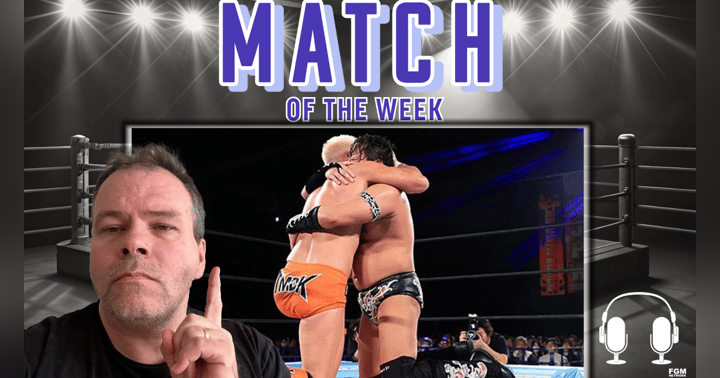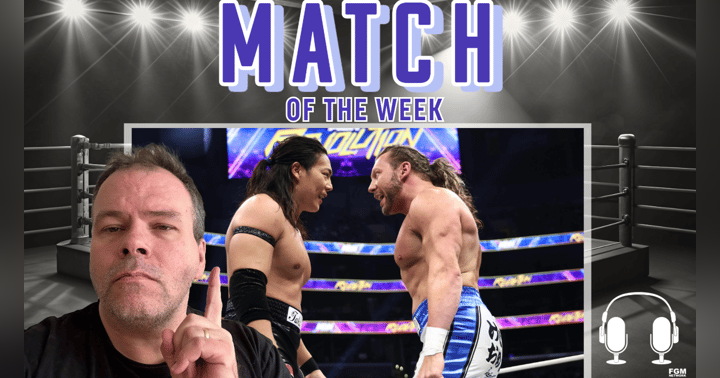Forks, Fights, and Philosophy: Queen of Villains, Episode Four Review

Episode four of Queen of Villains delivered another gripping installment, with this episode surely bringing us to the story's coming peaks. The standout scene was a match featuring Devil Masami and Dump Matsumoto taking on the Crush Gals. In true chaotic fashion, the match didn’t hold back, with referee Mr. Abe even passing Dump a fork during the brawl—reminiscent of how things really were back then. The episode captured the wildness of those days, showing how far heels would go to win, even with referees bending the rules.
One of the most interesting moments in this episode came after the match, when Devil and Dump split up as tag partners. The emotional intensity of the scene backstage, where the two argued and tensions flared, was palpable. Yukari Honjo, aka Crane Yuu, also unmasked, adding another layer of drama to the show. The theme of “stolen heat” surfaced in this argument, as the episode portrayed how wrestlers jockeyed for attention and popularity, a crucial aspect of Joshi wrestling’s competitive environment.
Later, Dump used a PA truck to throw shade at the Crush Gals in a bold, theatrical move, cutting promos on them, mic in hand, all while on the road. These types of over-the-top moments were a hallmark of the era, and the show captured that perfectly. However, the episode wasn’t just about in-ring drama—it also dived into deeper philosophical questions about the nature of wrestling itself. The episode explored whether wrestling was meant to be “pure” or if it was acceptable to use martial arts or even weapons. Was there a “true” way to wrestle, or was everything fair in the pursuit of victory? These questions lingered throughout the episode, adding depth to the narrative.
A taste of reality: Jaguar Yokota & Devil Masami vs. Crush Gals (Chigusa Nagayo & Lioness Asuka), 1984
One of the most compelling scenes involved Chigusa and Jaguar Yokota having an argument over the role of music and singing in wrestling. Chigusa believed it was all part of the job, while Jaguar was more focused on the purity of wrestling itself. Fans who watched this scene likely found themselves sympathizing with Jaguar, whose passion for wrestling shone through. It raised interesting questions about what it meant to be a wrestler during this era, especially with the rise of celebrity culture among the wrestlers.
As Dump’s popularity grew, her grasp on reality began to shift. The episode played with the concept of how “real” Dump’s persona had become and where the line between reality and gimmick began to blur. The more volatile Dump became, the more it reflected the complexities of wrestling in the 1980s, especially in Japan, where kayfabe was often taken to extremes. This theme—about the blurred lines between reality and performance—was a crucial undercurrent throughout the episode.
Jaguar Yokota’s comments on wrestling were particularly poignant, offering an eloquent meditation on the nature of pro wrestling itself. Her insights brought a level of sophistication to the discussion, especially for those unfamiliar with the nuanced history of Japanese wrestling. These moments highlighted just how deep the show could go when it came to exploring the art form, particularly in the way wrestling is perceived in Japan.
The theme of “stolen heat” surfaced in this argument, as the episode portrayed how wrestlers jockeyed for attention and popularity, a crucial aspect of Joshi wrestling’s competitive environment.
The episode also brought fans a grudge match between Lioness Asuka and Chigusa Nagayo, adding to the emotional weight of the story. This rivalry exemplified the anatomy of a Japanese wrestling feud, with its complex layers of both competition and respect. The authenticity of the show continued to stand out, making this episode another example of the high-quality storytelling that sets Queen of Villains apart.
By the end of the episode, Dump had fully embraced her villainous persona, solidifying her status as one of the most fascinating characters in the series. Episode four continued to deliver on the emotional and philosophical stakes of the series, leaving viewers with much to ponder about the nature of wrestling, both in the ring and beyond.
Read our Queen of Villains Episode Three review, and keep an eye out for our recap and analysis of Episode Five.






